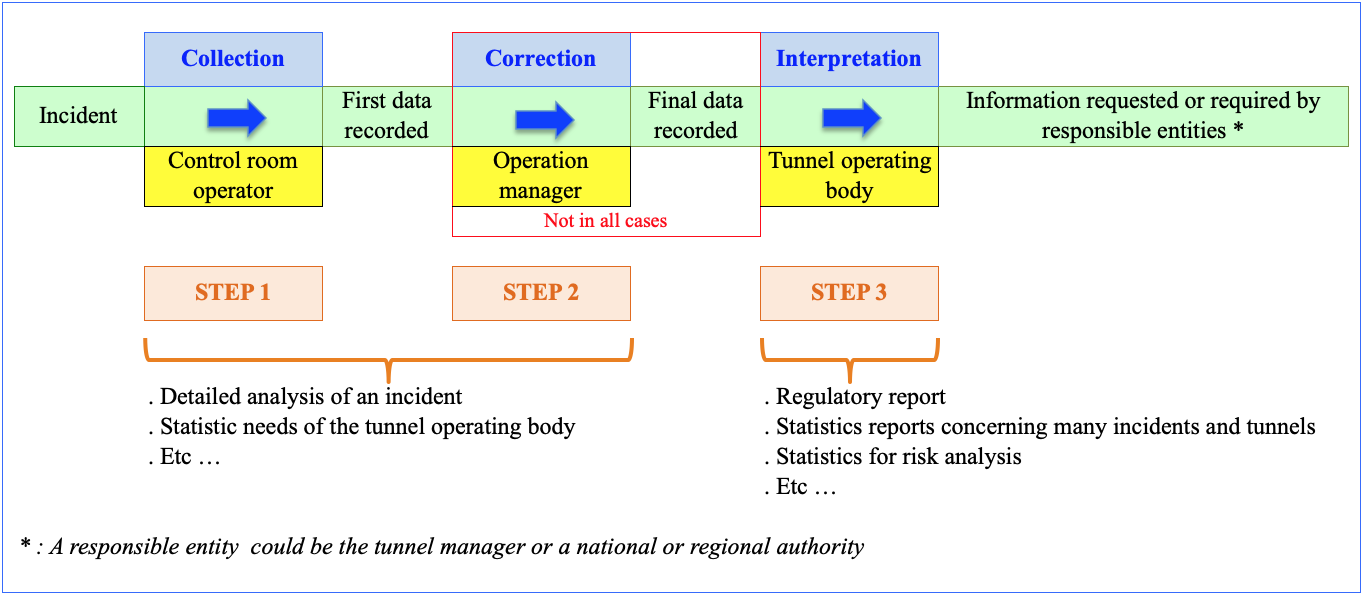
Road Tunnels Manual

Road Tunnels Manual
Collection and analysis of incident data, as detailed in Chapter 3 "Collection and Analysis of Data on Road Tunnel Incidents" of report 2009R08 are essential for the risk assessment of a tunnel and for the improvement of its safety measures. The process is two-fold, starting at the local tunnel level to cover specific needs, like input data for risk analysis, and extending to fulfil legal obligations such as reporting statistics at national/international level. The evaluation of specific events (accidents and incidents) may help to identify specific hazards in a tunnel as well as to optimise operational procedures and the reaction of safety systems. As well as analysis for real incidents, analysis of data from safety exercises can help to gain experience in the management of incidents under realistic circumstances.
Practical issues of incident data collection are further addressed in Chapter 2 of the report 2016R35 “Experience with Significant Incidents in Road Tunnels”, based on the 3 fundamental steps of the incident data collection chain, which are collection, correction and interpretation (see figure 1). Practical problems and limitations are discussed and recommendations for improvements are given.

In particular, it has been noted that it can be very time-consuming to collect all necessary data for a relevant evaluation leading to improved safety procedures or for incident statistics used in risk analysis. There can be a conflict in available and required resources for data collection. It is therefore recommended to clearly define the data collection chain and identify all parties involved. All stakeholders should define their feedback objectives, whilst taking into account the difficulties to obtain and correct data and the resources needed. Based on the objectives and available resources, the required data should be clearly identified, as well as in which time period the data should be collected (immediately after/during the incident or at a later stage) and which parties should be involved in the data collection. In order that the parties involved remain motivated, two main actions have to be handled. First of all, the purpose of data collection has to be made clear. Secondly, lessons learned and benefits such as improved procedures and systems have to be provided.